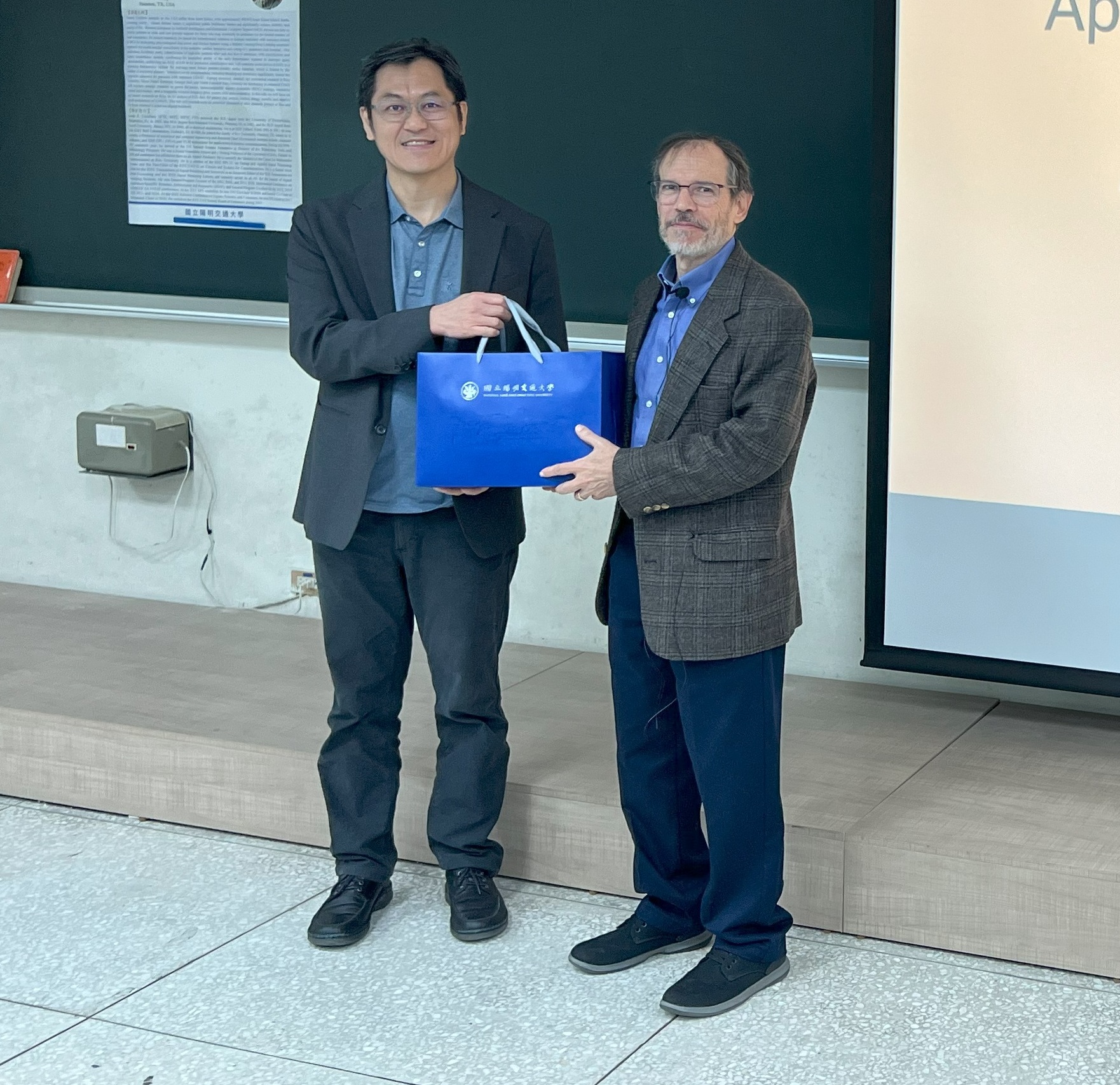Speech by Dr. Joseph R. Cavallaro: Advances in Wireless Communication for 6G Systems: Algorithms, Architectures, and Testbeds
- Published on
- Author
- 魏彣芯

The speaker, Professor Joseph R. Cavallaro, is from Rice University in the United States, where he serves as a Professor and Associate Chair in the Department of Electrical and Computer Engineering. His research primarily focuses on computer arithmetic, and the application of DSP, GPU, and VLSI architectures in wireless communications.
The topic of his lecture was the advanced applications of wireless communication in 6G network systems, covering system architecture design, challenges, and his team's most recent research directions. 6G wireless communication systems involve a wide array of advanced algorithms designed to deliver high-speed data transmission and improved efficiency. However, achieving real-time performance with these algorithms poses significant challenges, including computational, communication, and I/O bottlenecks, as well as trade-offs between area, latency, and performance.
In large-scale MIMO systems, as the number of base station antennas increases, so do the demands for high-speed data, low latency, and scalability. This has made decentralized baseband processing a key technology — distributing the intensive computational tasks across multiple nodes or units rather than relying on a single centralized entity. Professor Cavallaro's team has developed a series of algorithms to ensure that the results computed by these distributed nodes can be synthesized with minimal information loss, while maintaining precise synchronization across the distributed processing units.
Another critical component in MIMO systems is the power amplifier (PA), which ensures that transmitted signals have sufficient power to overcome path loss and reach the intended users or receivers. PAs operate most efficiently in their nonlinear regions, but this nonlinearity can reduce the accuracy of beamforming and introduce inter-user interference, degrading the quality of service. To address this, digital predistortion (DPD) is used for compensation. In Professor Cavallaro's research, DPD modules are placed ahead of the PAs, and they designed core components of the DPD to address these issues. Their results were validated using Adjacent Channel Leakage Ratio (ACLR) measurements.
Professor Cavallaro also introduced several wireless network test platforms. The 3DML CCRI Project is a machine learning platform in the wireless domain that can automatically collect user-defined datasets. POWDER-RENEW offers state-of-the-art resources for radio, computation, storage, and cloud access, enabling researchers to conduct experiments with scalable and realistic wireless infrastructure.
Building on the experience from these platforms, his team launched a new testbed project this summer. In this project, Houdini is a software-defined radio system that supports emerging frequency bands, enabling access to multiple bands simultaneously and generating diverse datasets to support advanced AI/ML research. The platform also supports disruptive services such as wireless sensing and wireless imaging, which extend the capabilities of traditional communication systems by introducing new functions and applications. These technologies go beyond basic communication and data transmission, enabling wireless devices to perform environmental monitoring, object detection, location tracking, and various other sensing tasks.
In this lecture, Professor Cavallaro presented a broad range of his own research. It was a great privilege to learn from a scholar at a leading university, and the experience was both eye-opening and enriching.